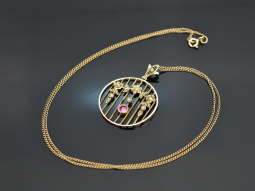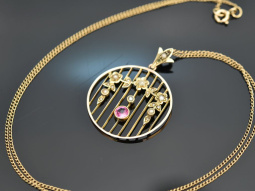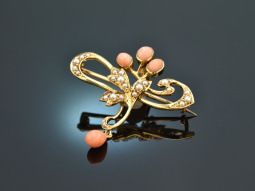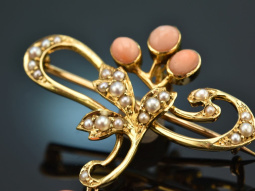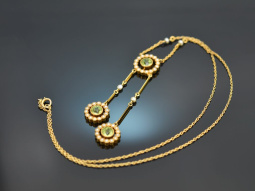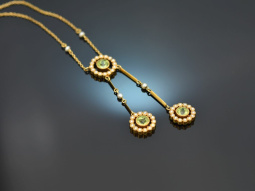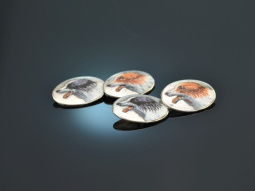Victorian Jewellery
(from 1837 to 1901)
The Victorian era was an era of cultural and social change, characterised by economic prosperity and the expansion of the British Empire under Queen Victoria (1837-1901), which gave the era its name. Victorian jewellery from Great Britain can therefore be seen as a mixture of romanticism and sentiment, industrial progress and joie de vivre. Find out more
Victorian jewellery and its characteristics
Jewellery of the Victorian era reflected both aesthetic and social aspects and was expressed in a variety of forms. Strongly influenced by Romanticism and Neoclassicism, jewellery was often made with floral motifs, hearts and bows. Brooches from the Victorian era were particularly popular in the form of bows.
On the other hand, the growing bourgeoisie, especially fashion-conscious women who were taking their first steps towards emancipation, demanded opulent and exotic designs made of high-quality materials such as gold. Coloured gemstones such as opals, rubies, emeralds and turquoises were delivered from the British colonies in seemingly endless numbers and found their place in multi-layered necklaces, rings and bracelets.
The Top 5 of the Victorian Era
Despite its diversity, antique Victorian jewellery reveals some particularly striking motifs that are still considered characteristic of the era today:
- Crescent moon: as a symbol of the exotic Orient, the crescent moon reflected the enthusiasm for foreign cultures at the time. It could also refer to ancient mythology (see Artemis, goddess of the hunt and the moon).
- Star: A motif that enjoyed maximum popularity at the end of the 19th century and became socially acceptable thanks to Sisi, Empress of Austria, and her world-famous hair ornaments. The star was also a symbol of 19th century orientalism.
- Swallow: Since ancient times, the swallow has symbolised Aphrodite, the goddess of love, and its constant arrival in spring embodied hope and returning love. At the same time, the swallow has something playful about it, it symbolises a new beginning and was seen as a sign of young love.
- Snake: An animal with ambivalent symbolism that stood for danger, cunning and seduction as well as eternity, rebirth and wisdom.
- The cross, heart and anchor symbolise faith, love and hope.
Novelty Jewellery
A typically British creation is so-called novelty jewellery, which mainly comprises small brooches in unconventional, amusing shapes. These pretty "novelties" were mostly made from cheaper materials and produced en masse.
The subject matter of these pieces of jewellery is seemingly limitless: playful little animals and insects were worn on the ear or neckline, as were musical instruments, sports equipment, automobiles or playing cards. Men also wore novelty jewellery in the form of cufflinks and watch chain pendants. These objects often referred to the wearer's occupation. The butcher adorned himself with a cleaver, while the locksmith wore a spanner.
Victorian mourning jewellery
The death of her husband Prince Albert in 1861 plunged Queen Victoria into deep mourning, which would accompany her until the end of her own life and was also expressed in her jewellery: black gagate, also known as jet - a fossil wood that can be easily worked and polished - or onyx adorned the monarch in the form of sentimental jewellery designs intended to keep the memory of her husband alive.
Victorian mourning jewellery reached an all-time high and was also very popular with the general public. Characteristic motifs such as skulls, ouroboros (serpent of eternity), crosses and interlocking hands were complemented by antique-style mourning scenes, inscriptions and locks of hair, leading to an open culture of remembrance and mourning.
Medallions from the Victorian era, in particular, often provided information about who was being commemorated in numerous loving details.
